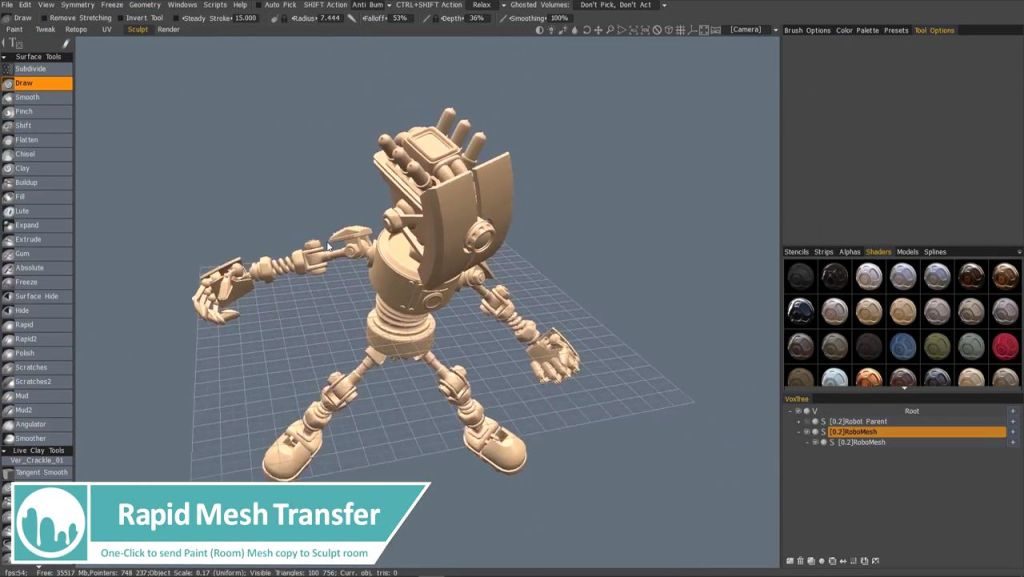

3D-Coat Autopo versus ZBrush ZRemesherĪfter speed-sculpting the above-pictured happy dog I decided to do a little test to get an impression which auto-retopology tool yields the most satisfactory result, 3D-Coat's Autopo or ZBrush's ZRemesher. The Instant Meshes quad-retopology algorithm or a variation is used by The Foundry's Modo.īlender 3D does not yet include an automatic quad-retopology function, only a generic, voxel-based quad-poly projection method in the shape of the Remesh modifier, which doesn't orient the polygon flow to the surface features. Instant Meshes is fast and free, but did not make it into this test, because it generates too many triangular dead-ends amidst the resulting quad-polygons, resulting in visible artifacts after subdivision. It's called Instant Meshes, and deserves an honourable mention.

There is another automatic retopology tool. 3D-Coat's auto-retopology tool is called Autopo, and ZBrush features ZRemesher. To ease the process of retopology, 3D-Coat and ZBrush offer a way to automatically generate a nicely flowing all-quad surface for your sculpture. Dyntopo is short for dynamic topology, and I love to use it for conceptual sculpting, as polygons are generated in realtime while you sculpt, enabling you to freely focus on shaping your model without having to worry about its polygon structure.Īt the time I write this, the most popular 3D sculpting tools are Blender 3D, Pilgway's 3D-Coat, and Pixologic's ZBrush. But even if no posing or animation is required, the semi-random polygon structure often causes visible surface irregularities, especially if you sculpt with triangular polygons, like when using Blender 3D's Dyntopo sculpting. This quad-polygon structuring and restructuring can be time-consuming and sometimes frustrating, and often takes away the spontaneous part of 3D model creation.Ī downside of freeform digital sculpting is that it usually results in a messy polygon structure, making the 3D model unsuitable for deformation, such as for posing or animating a character. The workflow of digital sculpting feels very much like traditional sculpting, adding daubs of digital clay and dynamically shaping them into a sculpture, while polygon subdivision modeling requires careful construction and adjustment of a quadrangular polygon cage in order to successfully subdivide it to a smooth result. I love the technique of freeform digital sculpting, as an alternative to polygon subdivision modeling.

We bring to you in the following section some of his work. Metin Seven a 3D designer, illustrator and animator has done a comparative study on the two best 3D auto-retopology algorithms available today - 3D Coat's Autopo and ZBrush's ZRemesher.


 0 kommentar(er)
0 kommentar(er)
